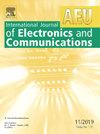Application of an innovative FPGA-optimized model on pancreatic β-cells: Validation via Lyapunov analysis and equilibrium stability
IF 3
3区 计算机科学
Q2 ENGINEERING, ELECTRICAL & ELECTRONIC
Aeu-International Journal of Electronics and Communications
Pub Date : 2025-04-28
DOI:10.1016/j.aeue.2025.155816
引用次数: 0
Abstract
Presenting an ideal hardware model capable of mimicking behavior of biological cells and neurons holds great significance in neuromorphic engineering. This research introduces a novel and unique approach to digitally implementing a biological cell model with the goal of reducing hardware requirements and enhancing processing speed while maintaining signal accuracy. The method outlined focuses on minimizing the number of nonlinear terms in the original model, making it well-suited for digital implementation. Specifically, this approach is applied to the pancreatic cell model in this study. Both software simulation and hardware implementation results validate the effectiveness of the proposed method in reproducing the signal and behavior of the original cell model by decreasing the number of nonlinear terms without discarding any equations from the initial model. By consolidating them into a single form, this method reduces the number of non-linear terms to one through a common variable, making it highly suitable for digital implementation. To validate the mathematical simulation findings, the proposed model was synthesized and implemented on the Zynq XC7Z010 (3CLG400) reconfigurable board (FPGA). The results demonstrate the ability to more efficiently reproduce biological behavior at significantly lower execution costs. Implementing this technique on the Zynq board can enhance the speed of the suggested model by up to 2.187 times compared to the original model, while also achieving a 34.91% decrease in energy (power) usage.
创新的fpga优化模型在胰腺β细胞上的应用:通过Lyapunov分析和平衡稳定性验证
提出一种理想的能够模拟生物细胞和神经元行为的硬件模型,在神经形态工程中具有重要意义。本研究介绍了一种新颖而独特的方法来数字化实现生物细胞模型,其目标是在保持信号精度的同时减少硬件要求并提高处理速度。所概述的方法侧重于最小化原始模型中非线性项的数量,使其非常适合于数字实现。具体来说,本研究将这种方法应用于胰腺β细胞模型。软件仿真和硬件实现的结果都验证了该方法的有效性,通过减少非线性项的数量来再现原始β细胞模型的信号和行为,而不丢弃初始模型中的任何方程。通过将它们合并成单一形式,该方法通过一个公共变量将非线性项的数量减少到一个,使其非常适合数字化实现。为了验证数学仿真结果,在Zynq XC7Z010 (3CLG400)可重构板(FPGA)上综合并实现了所提出的模型。结果表明,能够以更低的执行成本更有效地再现生物行为。在Zynq板上实现此技术可以将建议模型的速度提高到原始模型的2.187倍,同时还可以实现34.91%的能源(功率)使用减少。
本文章由计算机程序翻译,如有差异,请以英文原文为准。
求助全文
约1分钟内获得全文
求助全文
来源期刊
CiteScore
6.90
自引率
18.80%
发文量
292
审稿时长
4.9 months
期刊介绍:
AEÜ is an international scientific journal which publishes both original works and invited tutorials. The journal''s scope covers all aspects of theory and design of circuits, systems and devices for electronics, signal processing, and communication, including:
signal and system theory, digital signal processing
network theory and circuit design
information theory, communication theory and techniques, modulation, source and channel coding
switching theory and techniques, communication protocols
optical communications
microwave theory and techniques, radar, sonar
antennas, wave propagation
AEÜ publishes full papers and letters with very short turn around time but a high standard review process. Review cycles are typically finished within twelve weeks by application of modern electronic communication facilities.

 求助内容:
求助内容: 应助结果提醒方式:
应助结果提醒方式:


